 Technology
Technology  Technology
Technology  Humans
Humans 10 Everyday Human Behaviors That Are Actually Survival Instincts
 Animals
Animals 10 Animals That Humiliated and Harmed Historical Leaders
 History
History 10 Most Influential Protests in Modern History
 Creepy
Creepy 10 More Representations of Death from Myth, Legend, and Folktale
 Technology
Technology 10 Scientific Breakthroughs of 2025 That’ll Change Everything
 Our World
Our World 10 Ways Icelandic Culture Makes Other Countries Look Boring
 Misconceptions
Misconceptions 10 Common Misconceptions About the Victorian Era
 Mysteries
Mysteries 10 Strange Unexplained Mysteries of 2025
 Miscellaneous
Miscellaneous 10 of History’s Most Bell-Ringing Finishing Moves
 Technology
Technology Top 10 Everyday Tech Buzzwords That Hide a Darker Past
 Humans
Humans 10 Everyday Human Behaviors That Are Actually Survival Instincts
 Animals
Animals 10 Animals That Humiliated and Harmed Historical Leaders
Who's Behind Listverse?

Jamie Frater
Head Editor
Jamie founded Listverse due to an insatiable desire to share fascinating, obscure, and bizarre facts. He has been a guest speaker on numerous national radio and television stations and is a five time published author.
More About Us History
History 10 Most Influential Protests in Modern History
 Creepy
Creepy 10 More Representations of Death from Myth, Legend, and Folktale
 Technology
Technology 10 Scientific Breakthroughs of 2025 That’ll Change Everything
 Our World
Our World 10 Ways Icelandic Culture Makes Other Countries Look Boring
 Misconceptions
Misconceptions 10 Common Misconceptions About the Victorian Era
 Mysteries
Mysteries 10 Strange Unexplained Mysteries of 2025
 Miscellaneous
Miscellaneous 10 of History’s Most Bell-Ringing Finishing Moves
Top 10 Grim Literary Classics With Hidden Whimsical Moments
There are some dark classics that are more widely famous than they are read. That means there can be pleasant surprises for those that take the time to read them. Scenes or bits of characterization that seem way ahead of their time or are amusingly jarring in general. If nothing else, they’re good for giving the impression that someone actually read the story if they know of such obscure and counterintuitive quotes. More important, they show that any real dark literary classic isn’t one note.
10 Things You Never Knew About Famous Movie Plot Twists
10 The Time Machine
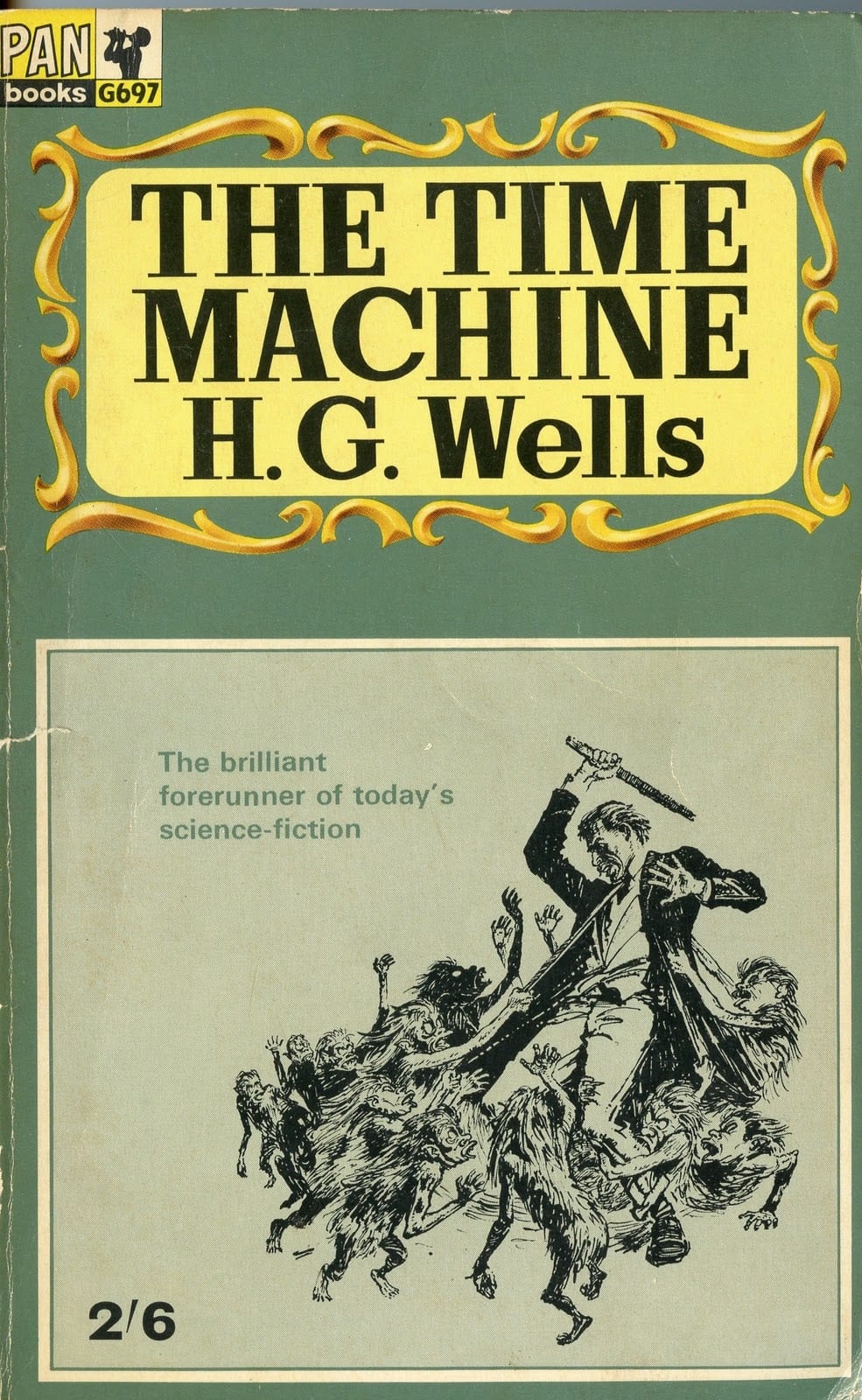
This 1895 H. G. Well’s novel effectively launched the time travel subgenre of science fiction. It’s a grim beginning, postulating that humanity’s inevitable class divide would eventually so utterly change people that we would be split into idle Eloi on Earth’s surface and pale, animalistic Morlocks who toil below, surfacing mainly to collect their Eloi herds. About the only real bright spot in this bleak vision is the friendship that the protagonist forms with the Eloi, Weena.
In the eleventh chapter called “The Palace of the Green Porcelain”,[1] the time traveler and Weena find a box of matches that’s still functional after all the millenia. Since it’s been established that the Morlocks fear fire, here’s how he reacts:
“…’Dance,’ I cried to her in her own tongue… I solemnly performed a kind of composite dance, whistling ‘The Land of the Leal’ as cheerfully as I could. In part it was a modest cancan, in part a step dance, in part a skirt dance (so far as my tail-coat permitted), and in part original.“
Before and after, the Time Traveler is a stoic Victorian gentleman. Then out of nowhere here he is “solemnly” doing a victory dance over matches. It sounds like a scene that would be put into a film adaptation done by Dreamworks Animation in the early aughts.
9 Frankenstein

Was any novel ever as supplanted in the cultural memory by a vastly different film adaptation as Mary Shelley’s 1816 milestone? Certainly more people know the lab assistant Igor than Robert Walton, and unlike Igor[2] Walton actually appears in the original book! The whole first two chapters are devoted to Walton’s arctic expedition. In the second chapter, Walton describes an event from the life of the shipmaster he hired, a character that barely features in the story:
“Some years ago he loved a young Russian lady … the father of the girl consented to the match. … she was bathed in tears… confessing at the same time that she loved another, but that he was poor… My generous friend reassured the suppliant… He had already bought a farm with his money … He bestowed the whole on his rival, together with the remains of his prize-money to purchase stock…”
This altruistic story is buried in a story of a man whose hubris leads to his creation made of corpses murdering a good portion of his family. Shelly keeps the story from getting too sentimental about this minor character by having Walton say of the ship master that “ignorant carelessness attends him.”
8 Strange Case of Doctor Jekyll & Mr Hyde
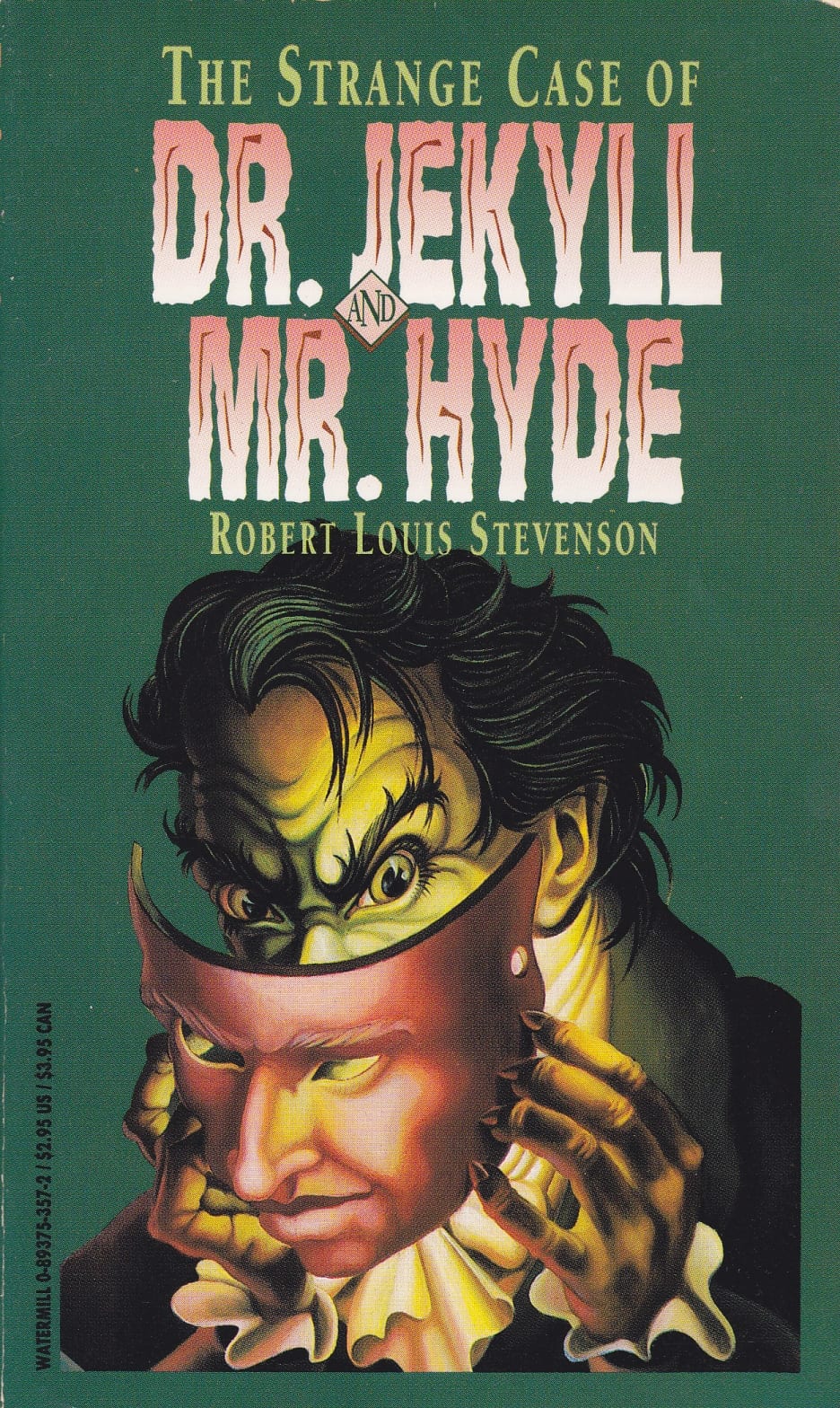
According to Lithub.com, this 1886 novel has so many adaptations that there are five known adults only versions alone. Not to mention that there are countless cartoon parodies of the premise. But the jokes didn’t start there.
In the second chapter called “Search for Mr. Hyde”, Doctor Jekyll’s friend Garbiel Utterson decides to look into why his friend is associating with a ruffian like Edward Hyde. Utterson is described as having “a rugged countenance that was never lighted by a smile” Yet Stevenson writes him thinking this:
“If he be Mr. Hyde,” he had thought, “I shall be Mr. Seek.”
That sounds more like something that would be included in a Looney Tunes short than in the original horror story. Then again, the book was written in an intense binge over the course of six weeks.[3] So while the story became a cultural touchstone, perhaps he himself didn’t take it quite so seriously.
7 A Study in Scarlet
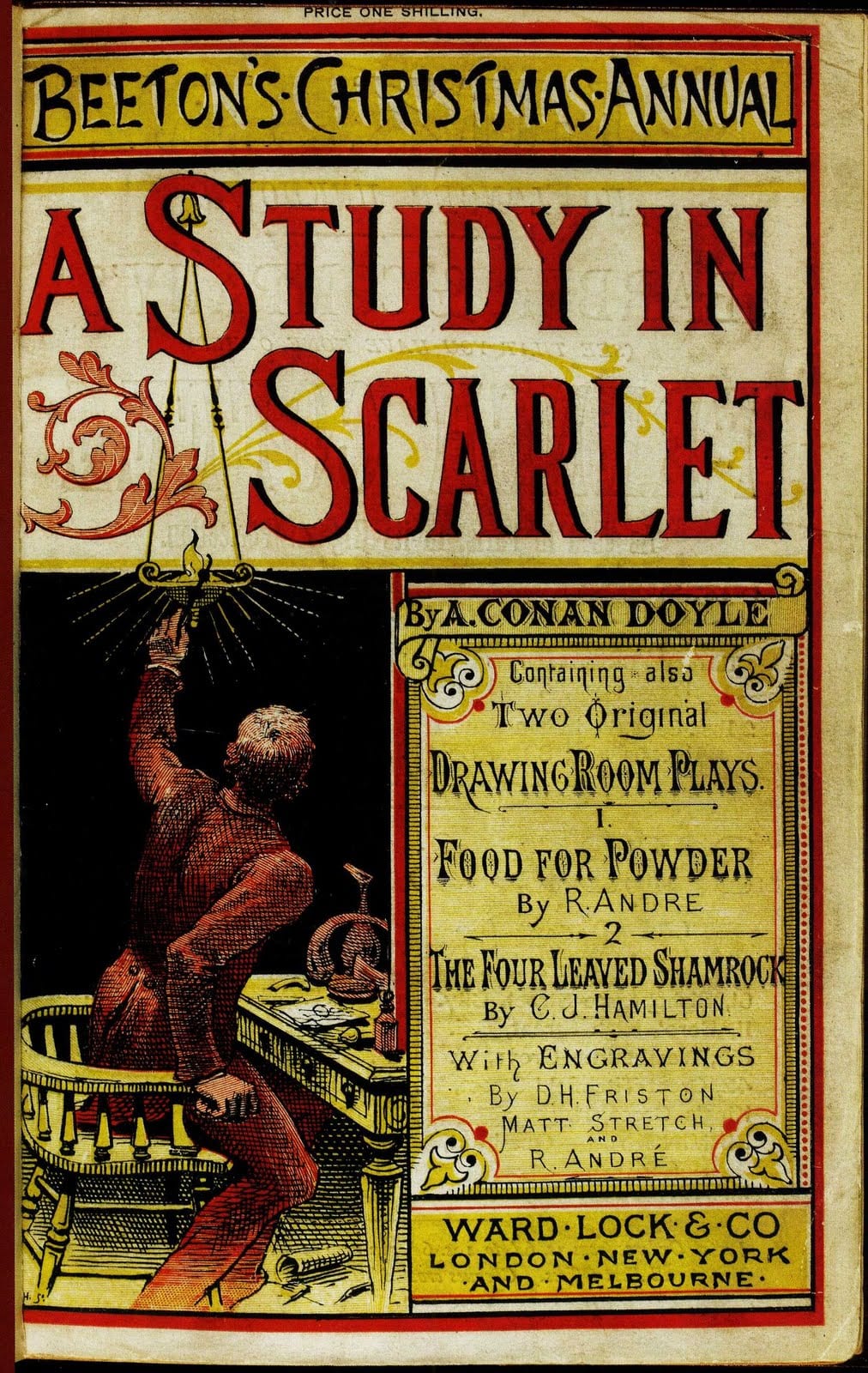
This 1887 Sherlock Holmes story was both the first starring the character and the longest. Considering that it takes its title from the bloody state of a room in which a victim is found, it’s also one of if not the grisliest. It also features the goofiest bit of characterization Holmes ever received:
“My surprise reached a climax, however, when I found incidentally that he was ignorant of the Copernican Theory and of the composition of the Solar System…
…”What the deuce is it to me?” he interrupted impatiently; “you say that we go round the sun. If we went round the moon it would not make a pennyworth of difference to me or to my work.”
Perhaps it was just a little quirk that was included to make Sherlock Holmes more memorable as a character during his introduction. Considering Sir Arthur Conan Doyle’s belief in such nonsense as the Cottingley Fairies,[4] perhaps that was him basing the character on himself, consciously or otherwise.
6 H. P. Lovecraft’s Dream-Quest of Unknown Kadath
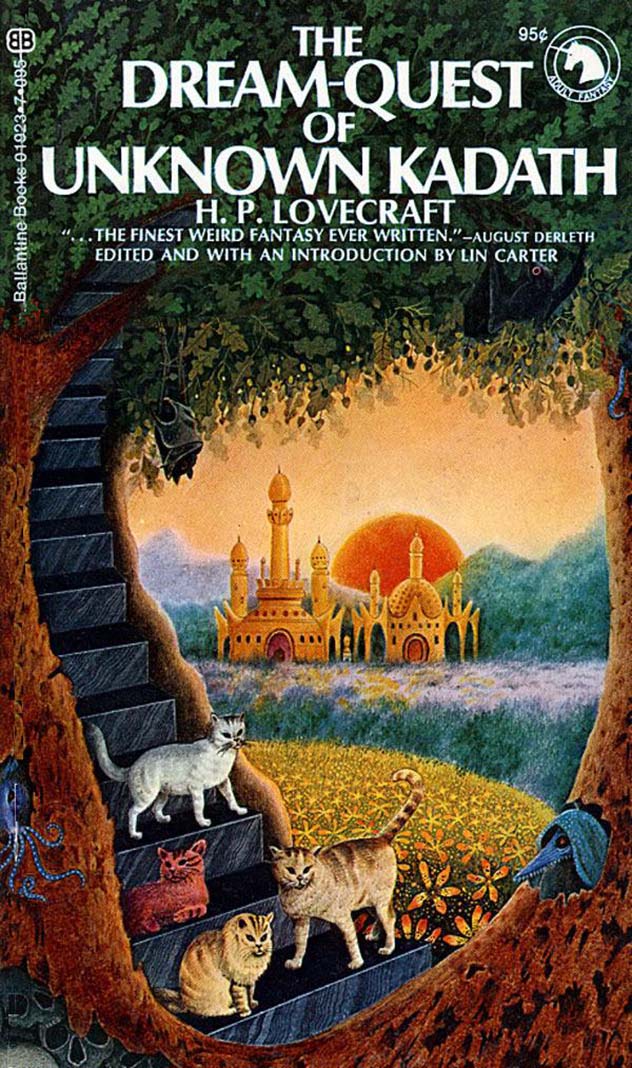
In 1927, cosmic horror icon Lovecraft a novella never published in his lifetime regarding one Randolph Carter’s quest to find a beautiful city he’d seen in his dreams. He encounters such groups as ghouls who eat their dead. Most curious of all are an army of cats capable of speaking to humans and sufficiently organized that they can form armies, complete with generals. The following scene happens after Carter’s cat allies have defeated a horde of monsters:
“Randolph Carter walked with dignity through that enchanted and phosphorescent wood of titan trees, talking of his quest with the old general and his grandson whilst others of the band indulged in fantastic gambols or chased fallen leaves.”
So for all his writings about writings about interdimensional monsters preying on people in a hostile universe, even Lovecraft could appreciate the simple pleasures of cats at play. No doubt this was inspired by Lovecraft’s own cat.[5]
10 Ancient Lost Books We Would Love To Read
5 The Raven
Perhaps the most famous poem of the 19th Century, as has been mentioned in another Listverse article it was not universally praised[6] in its time. Today, it’s so acclaimed across so much popular culture that the National Football League team the Baltimore Ravens are named in its honor. Yet few adaptations allude to this stanza:
“Then this ebony bird beguiling my sad fancy into smiling,
By the grave and stern decorum of the countenance it wore,
‘Though thy crest be shorn and shaven, thou,’ I said, ‘art sure no craven,
Ghastly grim and ancient Raven wandering from the Nightly shore—’”
The protagonist who was just terrified by unfurling curtains smilingly makes little puns. The tone shifts back to horror after a couple lines when the protagonist notices the air growing denser from some unseen censer but for a moment Poe includes some comic relief.
4 The Invisible Man
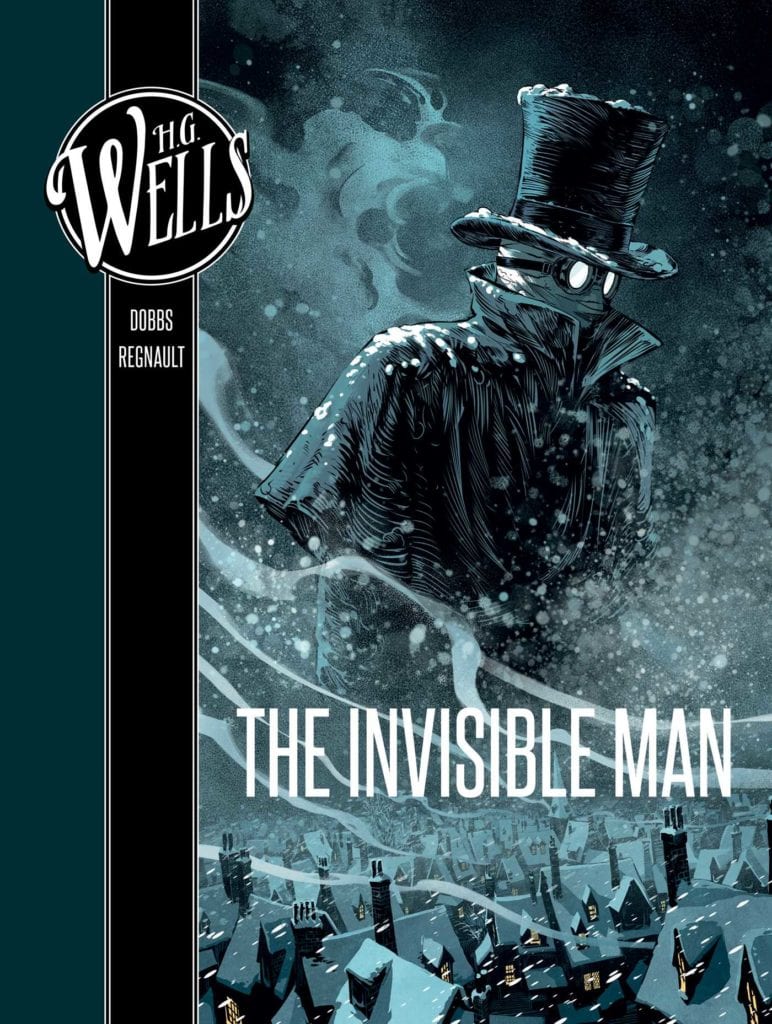
As late as 2020, H. G. Wells’s 1897 landmark novel is still getting hit adaptations. In no small part that’s due to just what an amoral man the titular invisible man Griffin was even before his invisibility serum drove him mad enough to think he could conquer the world. For example, in Chapter 20 Griffin explains how when his father committed suicide, Griffin says he “did not feel a bit sorry” because his father had been a victim of his “foolish sentimentality.”
Still, despite the ingeniousness of Griffin’s discovery, the novel begins with the invisible man in an unremarkable inn in the small town of Iping trying to find a cure for his power. The locals become extremely curious about the man with the wrapped face. One local makes plans.
“Elaborated in the imagination of Mr. Gould, the probationary assistant in the National School, this theory took the form that the stranger was an Anarchist in disguise, preparing explosives, and he resolved to undertake such detective operations as his time permitted. These consisted for the most part in looking very hard at the stranger whenever they met, or in asking people who had never seen the stranger, leading questions about him.”
This comical character is likely drawn from life. Wells was an active socialist.[7] No doubt he’d run into a number of Mr. Goulds in his time, so Wells couldn’t resist poking a little fun at them.
3 Of Mice and Men
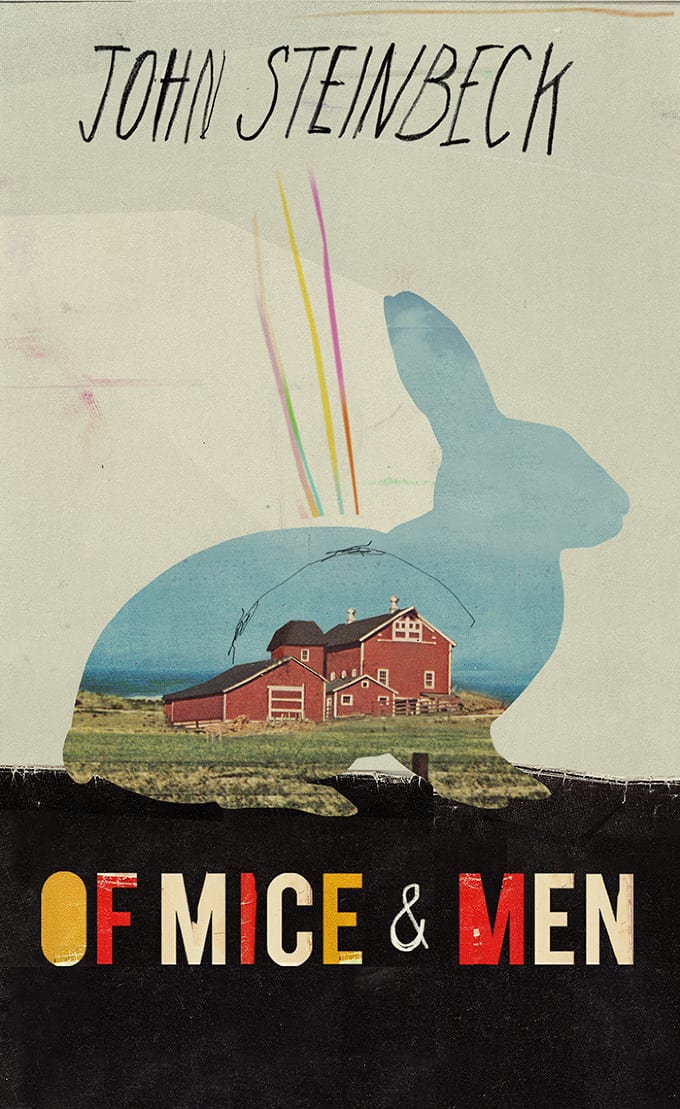
Almost immediately in 1937 John Steinbeck’s tragic novel of George and Lenny became a Depression-era touchstone. Even before its publication it sold over 100,000 copies and spent most of the year atop the bestseller list. It’s characterizations are brilliantly simple. The fact Lenny is so dangerous but so simple that he wants nothing more than to pet rabbits is a good study in contradictions.
However there is a scene that stands out from the otherwise gritty and realistic story. Shortly after Lenny has accidentally killed a person, he is waiting in the hiding place he and George had arranged in advance. Unable to cope with knowing that George will likely be angry with him, he has hallucinations.:
“… from out of Lennie’s head there came a gigantic rabbit. It sat on its haunches in front of him, and it waggled its ears and crinkled its nose at him…
“Tend rabbits,” it said scornfully. “You crazy bastard…”
Clearly Steinbeck was trying to portray Lenny’s distress in a more subjective manner. Still, a giant talking rabbit, even a hallucinatory one, is so unlike anything else in the rest of the novel it can’t help feel jarring. It’s no surprise that the scene was cut from the 1939 and 1992 film adaptations.[8]
2 1984

Frustrated with his uncertainty over his own memories of whether life was better before Big Brother’s party took over, in Chapter 8[9] protagonist Winston Smith visits a bar full of proles and buys a beer for an old man so as to question him about the past. The old man keeps getting hung up on words from the past that Smith uses such as “top hats” and “lackeys,” and eventually Smith tries to just get to the point.
“‘Perhaps I have not made myself clear,’ he said. ‘Would you say… that life in 1925 was better than it is now, or worse?’…
‘I know what you expect me to say,’ he said. ‘You expect me to say as I’d sooner be young again. Most people’d say they’d sooner be young, if you arst’ ‘em.”
The timing and structure of the conversation is practically a comedy routine. Orwell could have communicated the same point by having the old man say he doesn’t remember or suggest the questions are making him suspicious. Instead, it’s almost as if Orwell is teasing his protagonist for conducting such an investigation.
1 Dracula
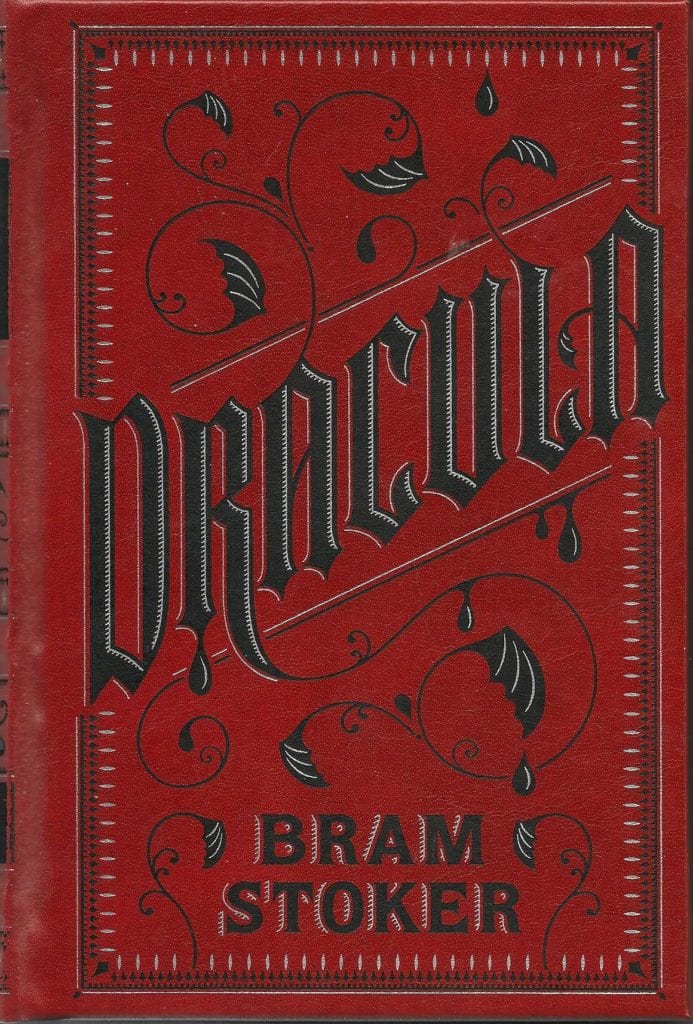
Bram Stoker’s 1897 novel which practically redefined horror actually did not enjoy great commercial success on its initial release. It was 1920s stage adaptations of the story that made Dracula a household name. So despite its renown there is a disconnect between the popular perception of Dracula and the novel’s actual content. One of the bigger points of disconnect is the character of vampire expert Abraham van Helsing. Bram Stoker gave the original version of Van Helsing a penchant for malaprops:
“‘Oh that we had known it before!” he said, “for then we might have reached him in time to save poor Lucy. However, ‘the milk that is spilt cries not out afterwards,’ as you say.’”
Van Helsing is no fool. He holds several doctorates[10] in Amsterdam and is able to get to the bottom of the mystery. But it is an interesting twist on one of the most influential pieces of modern horror that it combines the voice of wisdom with the comic relief in one character.
About The Author: Return of the Living, a horror comedy set on Earth after everything has died and been replaced by ghosts, is too new to be a literary classic but Dustin Koski still highly recommends it.
Top 10 Famous Companies With Unexpected Origins








